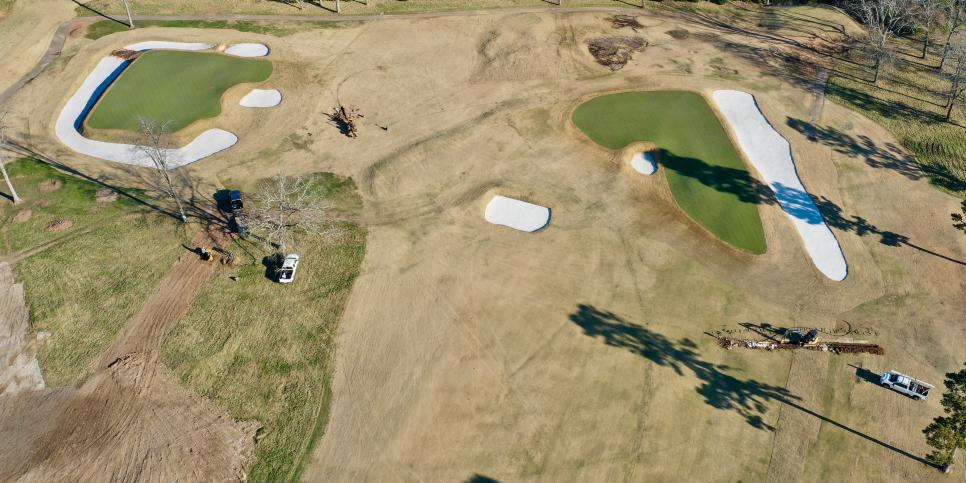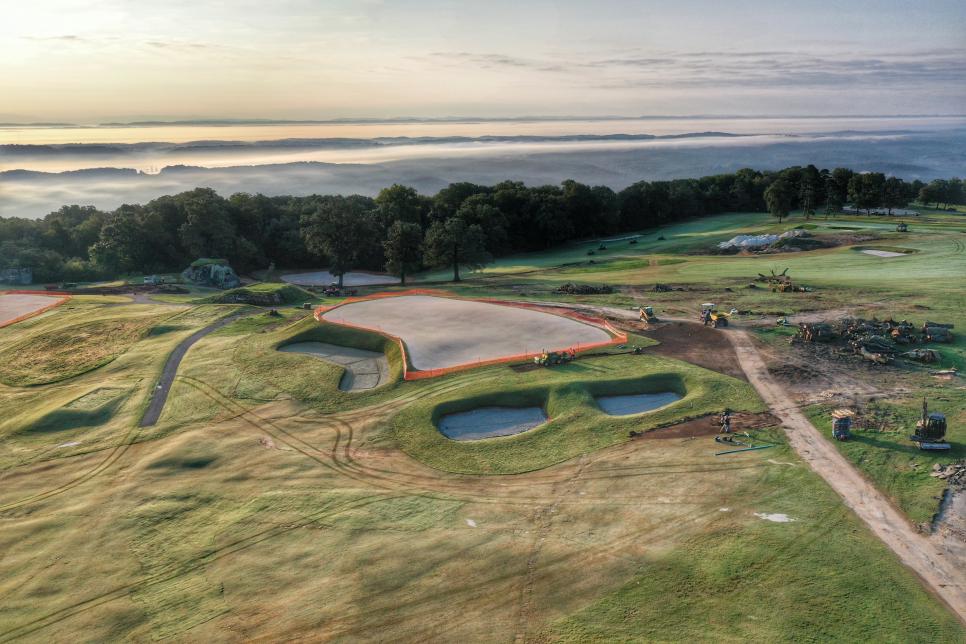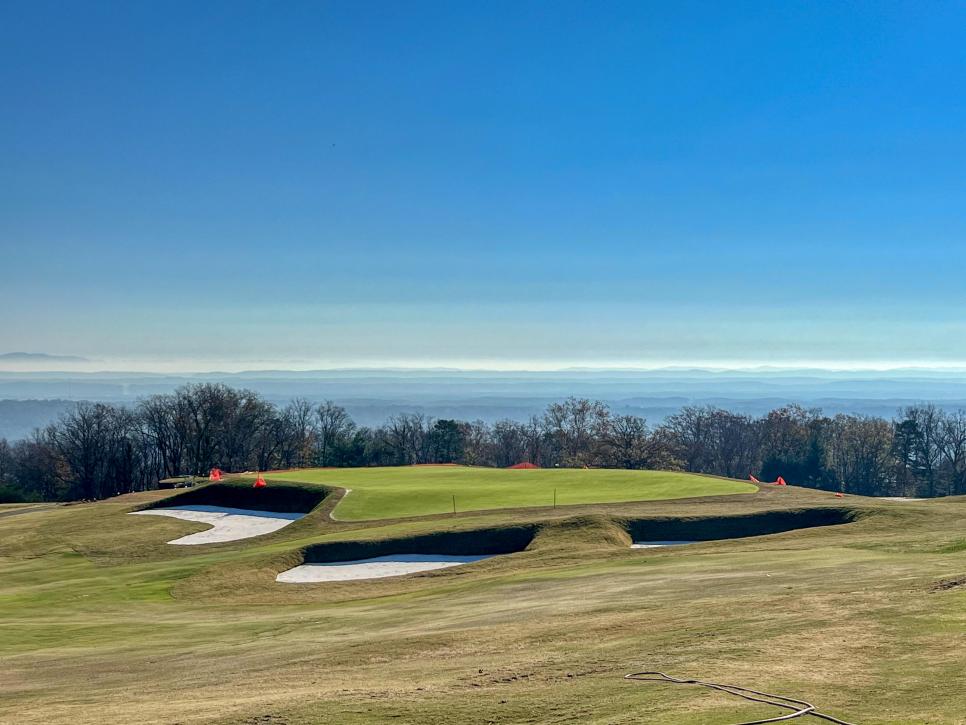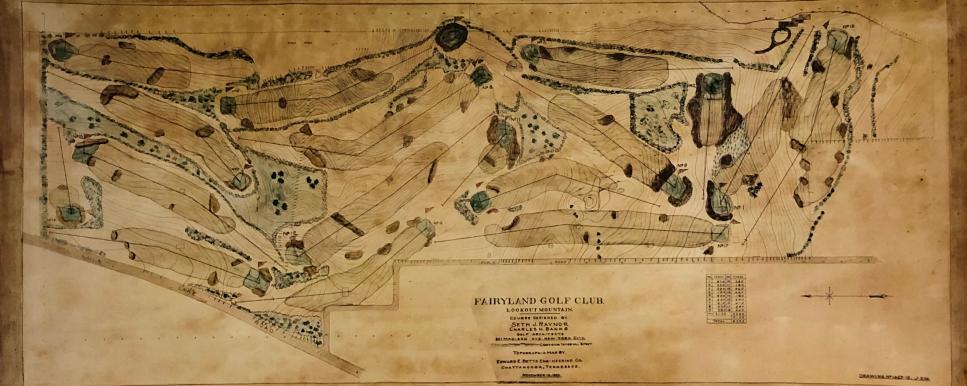For decades, Lookout Mountain Club was viewed by architecture buffs and historians as one of America’s great renovation opportunities.
Seth Raynor laid out the course in 1925 on a high, tilting property near Lookout Mountain’s northeastern flank, just outside of Chattanooga. Raynor, who came into the profession over a decade earlier as a surveyor and construction specialist helping celebrated architect C.B. Macdonald build courses like National Golf Links of America, Piping Rock and the extinct Lido Club, had by this time become one of the most active and sought-after designers in the United States. At each of his commissions, including Lookout Mountain, he used variations of the “ideal holes” Macdonald first developed at NGLA (based on original holes from the U.K.), including the Redan, Eden, Road Hole, Alps (below), etc.

These Raynor/Macdonald hole templates have always been present at Lookout Mountain, though few golfers would have recognized them. The course was never finished to Raynor’s plans or standards because he died in 1926 before construction began, and budget constraints and the difficulty of building on the mountain’s solid granite prevented his associate Charles Banks from executing the details. At the time, it was believed to be the second-most expensive golf course ever built, after Yale, another Raynor/Macdonald design.
The subsequent years were no kinder. The club never had the resources to properly invest in preserving the Raynor architecture that did get built, and over the decades the greens shrunk, the bunkers dulled and tree-planting crowded the holes. Despite the memorable elevated setting, Lookout Mountain resembled a Raynor course only in glancing angles, a great “what if” considering that the architect’s best-preserved work includes four courses—Fishers Island, Chicago Golf Club, Camargo and Shoreacres—in Golf Digest’s top 50.




Knowing the intended green sizes and hole patterns was instructive, but there were no directions for how to recreate specific green contours. Having visited all but five of the roughly 50 known Raynor courses, Rae and design associate Benjamin Warren shaped each of them with elements in mind of similar template greens found at the architect’s other designs. Ridges, swales, spines and depressions taken from inspirations like Blue Mound, The Creek, Morris County and other Raynor courses are scattered like Easter eggs throughout Lookout Mountain’s greens.
Overall, the putting surfaces were expanded from an average of 6,000 square feet per green to over 9,000 square feet. The movements vary from the subtle tilts and breaks that have always mystified Lookout Mountain players to more incandescent shapes like the big Biarritz fourth with its rising rear section; the “Dustpan” fifth jammed with some of the most profound contours of any course Raynor had a hand in designing; the Punchbowl Alps green at the 11th; the remarkable Redan at 13th that was formerly swaddled in a grove of trees but now shows off a horizon that stretches somewhere deep into northern Georgia; and the massive boomerang Road green at the 15th.
The bunkers have also been brought back and increased in size by more than 50,000 square feet. Rae’s research leads him to believe that the strong geometric bunker lines typically associated with Raynor—the rectangular forms and curved trapezoidal shapes with squared-off edges—have become an interpretation and were not what the architect designed. The plans at Lookout Mountain and of others he’s seen show a wavy, freehand edging with less formality, and that’s reflected now.

The better proportioned architecture fits the land in a way it probably never has before, the site’s cascading dimensions filled up with spacious greens, staggered bunkers and sloping landing areas. The removal of nearly 2,000 trees has once again opened up the same distant panoramic vistas that would have initially inspired Raynor.
As of mid-November, 17 of the 18 greens were seeded, some nearly mature, and the club looks to reopen the course to members Memorial Day 2023. After nearly a century, Lookout Mountain will finally have the course Seth Raynor designed for it.



